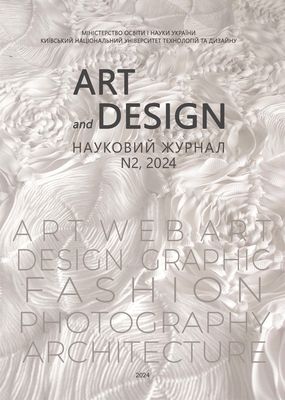A STUDY OF NARRATIVE LANGUAGE IN TRADITIONAL CHINESE CHARACTER GRAPHICS
DOI:
https://doi.org/10.30857/2617-0272.2024.2.2Keywords:
Traditional style, cultural factors, character-picture relationship, narrative expression, Chinese character graphicsAbstract
Purpose: the forms of traditional Chinese character graphic narrative expression and their ideological causes are analysed, focusing on the combination of the original meaning of the characters and the relationship between characters and diagrams, revealing the system's function and organisation, so as to summarise the design forms and techniques involved.
Methodology. The ideological and stylistic foundations of graphic narratives of Chinese characters are analysed using the literature induction method and interdisciplinary research method. It also combines the case study method to analyse the narrative mechanism of typical expression forms.
Results. In terms of narrative expression, it is pointed out that traditional Chinese character graphic design is influenced by the culture of Chinese characters and national ideology, thus summarising the typical forms of expression, including textual pictorialisation, meaning concealment and multiple visual levels.
Scientific novelty. Combining the theories of philology and culture, it combs through the ideological lineage of traditional Chinese character graphic narrative design, and seeks to explain the formal differences with similar works in Europe and the United States, in order to highlight the nationalised characteristics of the design.
Practical significance. The study is conducive to helping designers recognise the essence of traditional Chinese design thinking and understand the rules of elemental organisation and expression at a narrative level, in order to inspire them to create innovative designs in their practice.

